Japanese Maple Tree
- September 26, 2023
- 0 comment
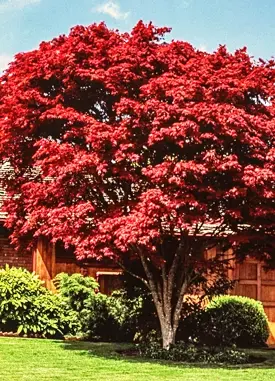
- Common Name: Japanese Maple Tree
- Botanical Name: Acer palmatum
- Family: Sapindaceae
- Plant Type: Deciduous tree
Lumber
Japanese Maple wood, known for its fine grain and beautiful reddish-brown color, is highly prized for woodworking and furniture making. It’s also used in the creation of musical instruments, such as violins and pianos.
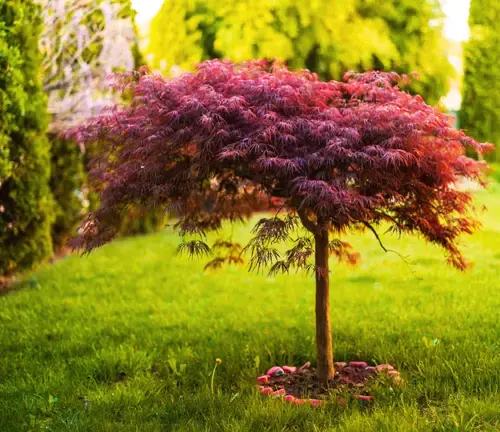
Mature Size and Growth Rate
Japanese Maple trees typically grow to a height of 10 to 25 feet, with a spread of 10 to 20 feet. They have a slow to moderate growth rate, making them suitable for smaller gardens and landscapes.
Soil Type
Japanese Maple trees thrive in well-drained soil enriched with organic matter. Well-draining soil prevents waterlogged roots, which can be detrimental to their health. The presence of organic matter in the soil ensures a steady supply of nutrients, promoting healthy growth and vibrant foliage. This combination of well-drained, organic-rich soil is essential for the Japanese Maple’s overall well-being and longevity in your garden or landscape.
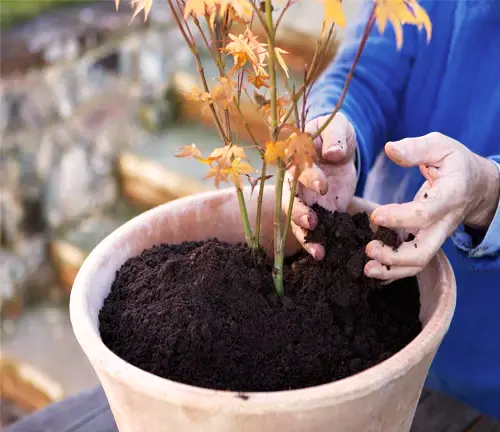

Soil Preferences
Japanese Maples prefer slightly acidic to neutral soil with a pH range between 6.0 and 7.5. They are sensitive to soil compaction and benefit from loose, well-aerated soil.
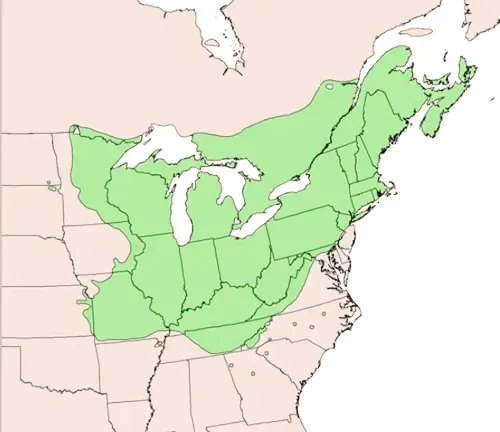
Hardiness Zone
Japanese Maples are hardy in USDA zones 5 to 8, although some varieties can tolerate colder temperatures.
Sun Preference
They prefer dappled or partial shade, especially in hot summer climates. However, some varieties can tolerate more sun if provided with adequate moisture.
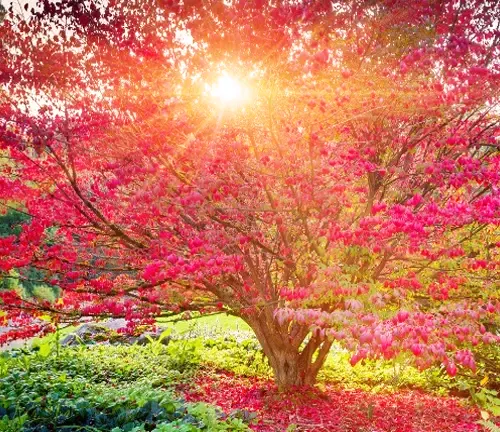
Attributes and Characteristics
Japanese Maples are known for their vibrant foliage in various colors, with striking autumn displays. They have an elegant, compact form and some varieties boast unique bark textures for year-round visual appeal.
Wildlife Value
Japanese Maples provide habitat and shelter for various birds and insects. They may attract birds seeking nesting sites or insects for pollination.
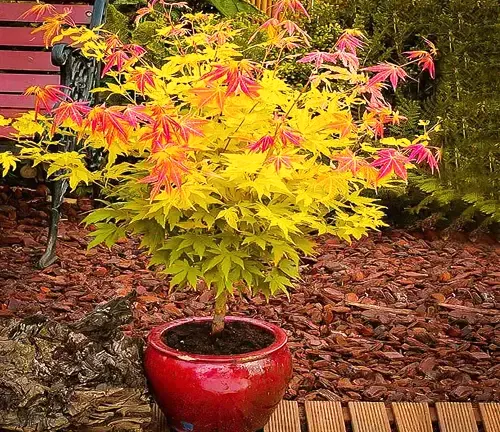
Care
To care for Japanese Maple trees, maintain consistent moisture without overwatering, use mulch for moisture retention and temperature control, prune in late winter or early spring for shape and health, and fertilize in the spring for vigorous growth.
Benefits
- Ornamental value: Japanese Maples are prized for their aesthetic beauty and add elegance to any garden or landscape.
- Shade: They provide a cool, shaded area in the garden, making them perfect for sitting areas or underplanting with shade-loving plants.
- Seasonal interest: The changing foliage colors throughout the year provide year-round visual appeal.
Invasive
Japanese Maples are not considered invasive; in fact, they are a cultivated ornamental species.
Lifespan
Japanese Maples can live for several decades, with some individuals surviving for over 100 years under optimal conditions.
Disadvantages
Japanese Maple trees come with a few disadvantages to consider. They demand ongoing maintenance, including regular pruning and careful monitoring of soil moisture levels. Certain cultivars may be vulnerable to pests and diseases, requiring vigilant care. In extremely cold regions, winter protection may be necessary to shield them from frost damage.

Edible or Not
While Japanese Maple trees are not typically grown for their edible qualities, there is no record of their leaves or wood being toxic to humans or animals. However, they are not considered a food source.
Habitat Requirements
Japanese Maples thrive in temperate climates with mild summers and cold winters. They prefer sheltered locations with protection from harsh winds and intense sun exposure.
Name of Origin
The Japanese Maple, as the name suggests, is native to Japan, Korea, and China. It has been cultivated in Japan for centuries and is highly regarded in Japanese culture.

Varieties
There are numerous Japanese Maple varieties, each with unique leaf shapes, sizes, and colors. Some popular cultivars include ‘Bloodgood’ (known for its deep red foliage), ‘Dissectum’ (with finely cut leaves), and ‘Sango Kaku’ (notable for its coral-red bark).
Pruning
Pruning Japanese Maples should be done carefully to maintain their elegant form. Remove dead or crossing branches and thin out crowded areas. It’s best to prune in late winter or early spring before new growth begins.
Propagating
Japanese Maples can be propagated through seeds, cuttings, or air-layering. However, growing from seeds may not produce offspring with the same characteristics as the parent plant, so many gardeners prefer to propagate through cuttings.
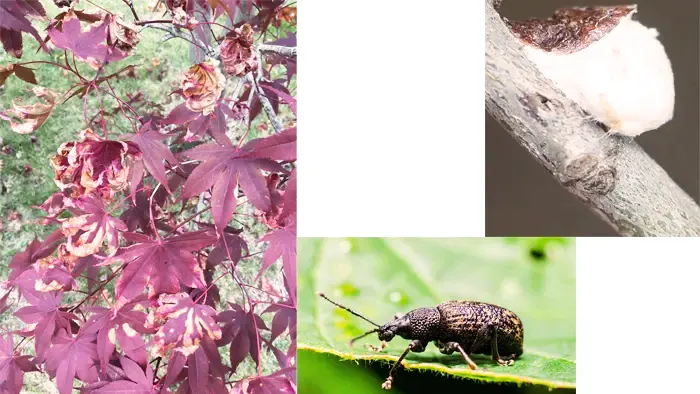
Common Pests & Diseases
Japanese Maples can be susceptible to aphids, scale insects, and fungal diseases like powdery mildew and verticillium wilt. Regular inspection and prompt treatment can help mitigate these issues.
Fun Facts
- The Japanese Maple is a symbol of peace, serenity, and grace in Japanese culture and is often featured in traditional Japanese gardens.
- It’s one of the most popular and beloved ornamental trees worldwide.
- The Japanese word for Japanese Maple is “Momiji,” which is also used to describe the beautiful autumnal colors of the leaves.
FAQs
- Are Japanese Maples suitable for small gardens? Yes, Japanese Maples are excellent choices for smaller landscapes due to their compact size and slow growth rate.
- Can Japanese Maples tolerate full sun? While they prefer partial shade, some varieties can tolerate full sun if they receive sufficient moisture and protection from intense afternoon sun.
- Do Japanese Maples require a lot of water? They do prefer consistently moist soil, so regular watering is necessary, especially during dry spells.
- Are Japanese Maples deer-resistant? While not completely deer-proof, Japanese Maples are less preferred by deer compared to other plants. However, in areas with high deer populations, protection may be necessary.
- How do I choose the right variety of Japanese Maple for my garden? Consider factors like your climate, available space, and the desired color and shape of the leaves. Consulting with a local nursery or gardening expert can also help you make an informed choice.
In summary, the Japanese Maple tree, known for its stunning foliage and graceful form, is a cherished and symbolic addition to gardens worldwide. While it requires some care, the beauty it brings to every season makes it a prized asset in any landscape.


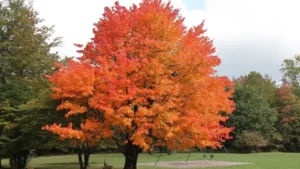
Leave your comment